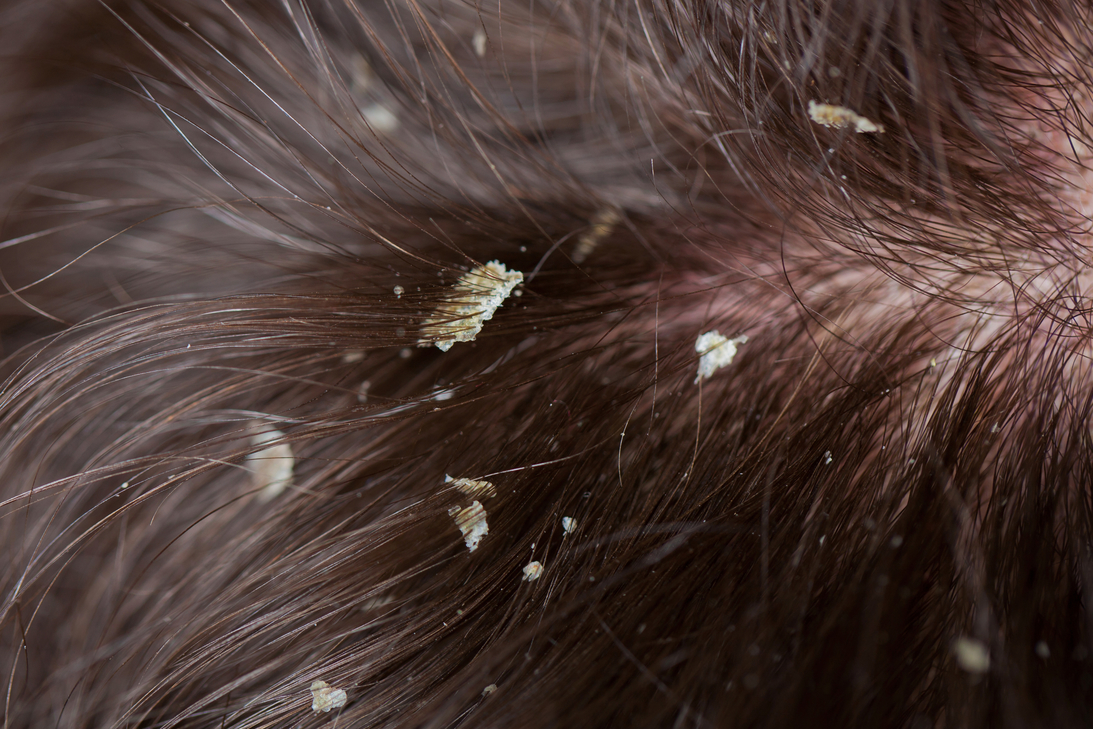When white flakes or specks are found on a head of hair it can be difficult to decipher what you are dealing with. Head lice may be the initial fear that runs through your mind. Rightfully so, as head lice is a highly contagious parasite that is passed through head to head contact onto roughly 6-12 million children per year in the United States. Before you jump to the head lice conclusion, let us examine the differences between a head lice infestation and a common case of dandruff.
What to Look For:
Dandruff is an actual piece of dead, flaky skin. White in color, dandruff falls off in clumps and can linger on shoulders, necks or the back of its sufferer. It is clearly visible to the human eye, usually to the trepidation of those that carry it.
Head lice are insects that feed off of human blood. They are nocturnal creatures so lice are much more active at night. Because they avoid direct light they can be extremely difficult to spot. When searching through hair strands for evidence of lice look specifically for any brown insects smaller than a sesame seed. If you do happen to find a louse or two it is clear you have a problem. Be aware, just because you don’t see a louse doesn’t mean you don’t have lice. Nits, or lice eggs, are the most common visible symptom of lice. Yellow in color, eggs are laid at the very base of the scalp. They are stuck to hair strands with a tacky substance that makes them much more difficult to remove than a flake of dandruff. Using a fine tooth comb to sift through hair is one recommended approach. The CDC also suggests the use of a small magnifying glass to help you inspect the scalp for red irritation or live lice.
Symptoms:
Dandruff is usually no more than itchiness, dry skin, and flakes. A severe case can sometimes be the result of a worse condition such as eczema or psoriasis. If you are experiencing large painful patches of dry skin that have a cracked, blotchy rash consult a dermatologist or healthcare professional. Normal dandruff is the result of overactive skin reproduction. As a normal person loses skin cells they are reproduced every four weeks. Dandruff sufferers can have skin cells that are regenerating four times that fast. This creates mounds of dead, dry skin that fall off much more often than normal leaving traces all over hair strands and clothing. Dandruff can also be caused by excessive use of hair products. Thoroughly clean and rinse hair to ensure that you are not dealing with product residue.
Head Lice will typically start causing symptoms three to four weeks after the initial contact. Lice eggs need ten to fourteen days to hatch and start living on the scalp. Traces of fecal matter and saliva from adult lice can cause skin reactions such as swelling and itching. Red bumps on the skin can also be an indication of bite marks. Eggs that are attached to hair strands about ¼ of an inch from the base of the head specify that lice eggs have already hatched. They will be white in color and easily peeled off. As more lice hatch they will obviously be easier to spot on the scalp as their numbers grow. Activity will increase at night, making it more difficult to sleep. Itchiness and irritation can be enough to interrupt sleep.
Treatment:
Dandruff is easily treated with over the counter medicated shampoos. Nearly half of adults will experience dandruff at some point in their life. It is a common problem that you can usually get a handle on after a few weeks of consistent treatment. Conditioning the scalp to provide moisture is also recommended. Protect your head from the elements with proper coats and headgear.
One short visit to the Lice Clinics of Texas will have you on your way to being lice free. We also sell over the counter products that can be effective and used in your home. Depending on your budget and time needs, our trained personnel will walk you through the best options for your specific situation.

